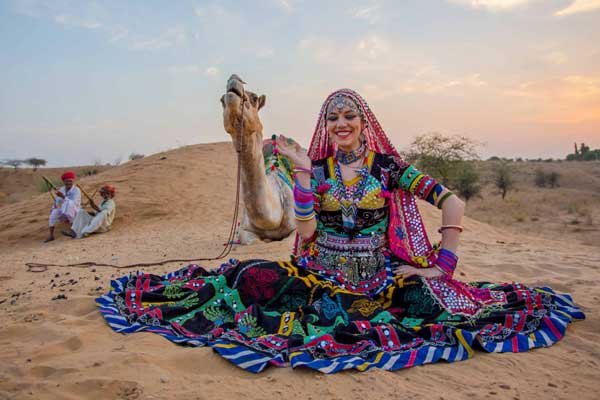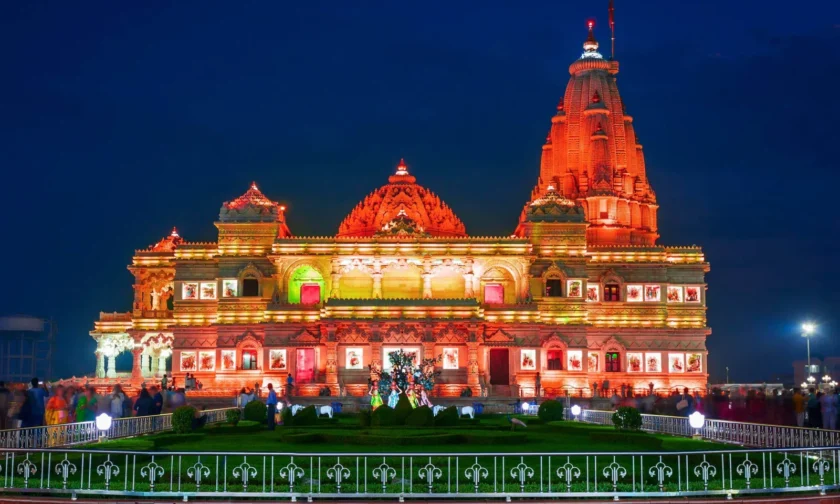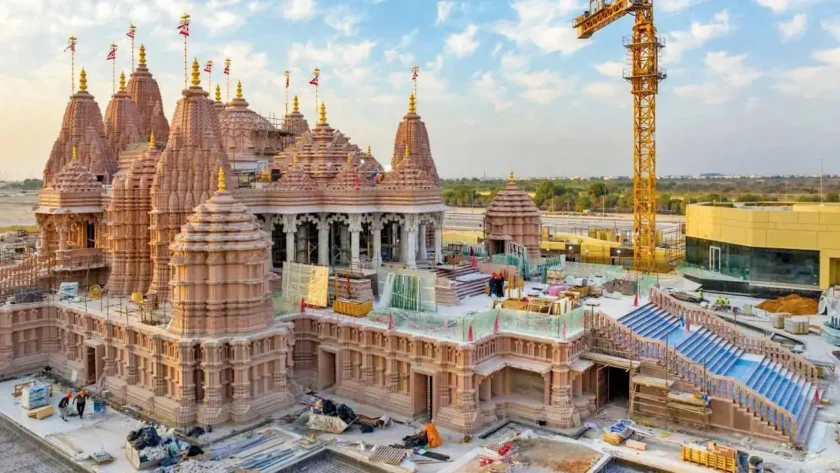Jaipur: Aravalli is the oldest mountain range in the geographical structure of India which is about 870 million years old. Located in Rajasthan, Haryana and Gujarat of India as well as Punjab and Sindh of Pakistan. The Aravalli mountain range is also known as ‘Mewat’ at the regional level. Some of the rocky hills of this 560 km long range pass through the northeastern region of Rajasthan state and reach the southern part of Delhi. The northern edge of this range extends from Haryana to the Delhi border. Its southern end is till Palanpur near Ahmedabad. This mountain is one of the seven Saptkul mountains of ancient India. Like the Hindu Kush mountain, it is also called Pariyatra or Parijat mountain, because the Parijat tree is found here.
Favorite place for climbers
The Aravali mountain range of Rajasthan is a favorite place for mountaineers. Forests, vegetation, wildlife, lakes, rivers and grasslands, mineral deposits as well as many tourist attractions in the mountainous region make the Aravalli mountain range very special. The highest peak of the Aravalli range, ‘Guru Shikhar’, is 5,653 feet (1,723 m) high at Mount Abu. Here Ser peak is 1597 meters, Achalgarh peak is 1380 meters, Delwara peak is 1442 meters and Abu peak is 1295 meters. Its peaks attract tourists. People come from all over the country to see them. The Jain temples of Mount Abu, Kumbhalgarh and Ranakpur are also particularly famous. To the north-west of Aravali are the regions of Jodhpur, Jaisalmer, Barmer and Bikaner, which interrupt its greenery. There are many holy and grand places in the northern region of Aravali. It is spread over a very wide area. The Aravalli mountain range is spread across 12 districts of the state as a part of it also falls in Bundi district.
Aravalli Mountains and Sirohi
Sirohi district is a border district of Rajasthan and Gujarat situated amidst dense forests at the south-western end of the Aravalli Hills. Mount Abu is the oldest mountain in India. This area was under rulers like Maurya, Kshatrapa, Hun, Parmar, Rathod, Chauhan, Guhil etc. In ancient times it was known as Arbuda Pradesh. Shivbhan, son of Deora king Raimal, established a fort on Sarnava hill and in 1405 AD. I established Shivpuri city which is today known as Sirohi.
According to Colonel James Todd, there were 999 temples in Chandravati Nagar. Due to abundance of temples it is called Dev Nagar. His art is worth seeing. Its ancient name was ‘Shivpuri’. Mount Abu in Sirohi is the highest peak of Rajasthan, Guru Shikhar at 1722 meters and the second highest peak is ‘Ser’ at 1597 meters. Mount Abu, home to sages, warriors, religion, art and culture, is home to marble, granite, tungsten, calcite, limestone and wollastonite minerals. Forests cover 31 percent of the land in this hilly district.
Salar, Acacia, Dhokra, Cirrus, Tendu, Khair, Kumtha, Bahera and bamboo trees are found. Mount Abu Sanctuary is here. Leopard, bear, wild boar, langur, wolf, fox, jackal, jackal, rabbit, wild cock, wild cat, badger, pheasant, quail and bulbul etc. are mainly found here. The colorful culture of the tribal Garasia in the district is reflected in their bright costumes, songs and dances. The dance performed collectively by women is particularly popular. About 2000 years old Jain temple is also worth seeing in Jiraval. Sarneshwar Temple, Mir Pur Temple and Sarvadharma Temple are also other famous temples of Sirohi.
Mount Abu
Mount Abu in Sirohi district of Aravali mountain range is the only hill station of Rajasthan from tourism point of view. Mount Abu was named after the Arbuda snake which protected Nandi, the bull of Lord Shiva. Exciting trails, enchanting lakes, perfect picnic spots and cool weather, which is different from other parts of Rajasthan, make Mount Abu a favorite tourist destination. Honeymoon Point and Sunset Point are popular.
Achalgarh
Achalgarh is an ancient fort situated on a high peak of the Aravalli mountain range. Maharana Kumbha of Mewar built a new fort on the ruins of this ancient fort which is known as Achalgarh. Achalgarh is a fine example of fortress architecture with strong ramparts and huge towers. Inside the fort, there is the royal palace of Kumbha, the palace of his Okha queen, granaries (food stores), soldiers’ quarters, huge water tanks, Sawan-Bhado lake filled with Atul water, danger warning towers built by the Paramaras, etc. Are. The ruins are spectacular.
Nakki Lake
Nakki Lake is a very beautiful lake situated between the mountains. This is the only artificial lake in India which is situated at an altitude of 1200 meters above sea level. It is believed that this lake was created by the Gods with their nails, hence it was named Nakki Lake. Boating facility is also available in the lake. There is also a temple of Raghunathji near Nakki lake.
Temples of Delwara

The group of carved Jain temples consists of five temples built in marble between the 11th and 13th centuries. Of these, two temples are huge and grand and three temples are their complementary temples. The largest Vimal Vasahi temple is dedicated to Lord Adinath, the first Jain Tirthankara. This temple was built in 1031 AD by Vimal Shah, the minister and commander of Chalukta king Bhimdev of Gujarat. When my wish of having a son was fulfilled, I got it done. This temple is approximately 98 feet long and 42 feet wide.
The pillars, walls, arches, roofs and domes of the temple have exquisite carvings and sculptures.
It is surprising. There are 57 shrines established in the temple in which idols of Tirthankaras and other deities are installed. The second largest Lun Vasahi temple is also an excellent example of art. This temple was built by Solanki rulers Tejpal and Vastupala. The dome of the temple-shaped pavilion is larger and more attractive than the dome of Vimal Vasahi. On the sides of the dome there are images of 72 Tirthankaras in sitting posture in circular stripes. Important events from the life of Tirthankara Neminath are beautifully carved in stone in the corridors of the temple. Along with these temples, Pitalahar Temple and Chaturbhuj Temple are also worth seeing. The temples make Mount Abu a beautiful Jain pilgrimage.
Arbuda Devi Temple
The importance of the temple of Maa Arbuda Devi situated on the hills of Abu can be gauged from the fact that it is one of the 51 Shaktipeeths of Sati (Parvati), where Sati’s lips had fallen. There are 365 stairs to reach this temple situated on the top of a hill, 3 km away from Mount Abu. The surrounding natural scenery is very beautiful throughout the way. Mata’s temple is built in the form of a natural cave, where the flame of Mata burns continuously. Devotees have to sit through the narrow passage of the cave.
Guru Shikhar
Guru Shikhar, 15 km from Mount Abu, is the highest peak of the Aravalli mountain range, to the north-west of which is the Guru Dattatreya Temple in a white-coloured building. There are footprints of Ramanand nearby. There is a magnificent brass clock on the summit. The entire view of Abu Ka looks fascinating from here.
Achaleshwar Mahadev
The ancient temple of Achaleshwar Mahadev located near the Achalgarh Fort on Mount Abu is the only temple in India where the thumb of Shiva is worshipped. The temple has a huge statue of Nandi made of Panch Dhatu, which has a toe mark on one side, there is a Shivalinga in the sanctum sanctorum, which is worshiped as Swayambhu Shivalinga. It is considered to be the right thumb of Lord Shiva. Outside the sanctum sanctorum are magnificent black stone statues of Varaha, Narasimha, Vamana, Kachhapa, Matsya, Krishna, Rama, Parashurama, Buddha and Kalangi incarnations. A temple of Dwarkadhish is also located in the complex.
Government Museum
The museum displays weapons, musical instruments, women’s jewelery and clothes of the people living in the hilly areas. The main attractions of the museum include sculptures of devadasis or dancers from the 6th to 12th centuries, a statue of Chakrabahu Shiva, a collection of 404 ancient sculptures and a statue of Vish Kanya. From the point of view of traffic, National Highway No. 14 and 27 pass through Sirohi district. Route No. 27 goes from Pindwara to Shivpuri. Abu Road Railway Station. The country’s capital Delhi as well as all major places in India and Rajasthan are connected by bus service. Buses from Gujarat and Madhya Pradesh are also available here.





